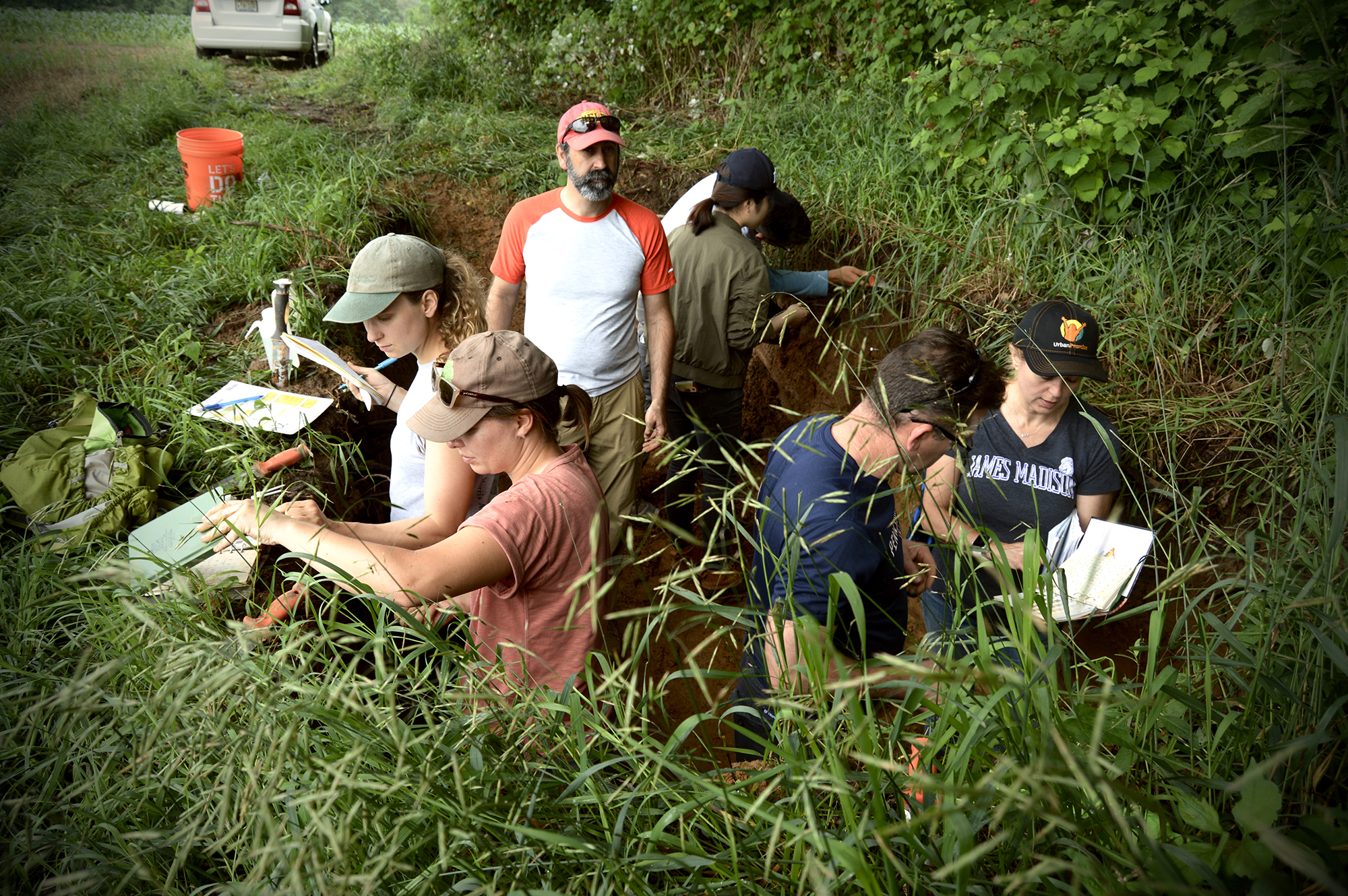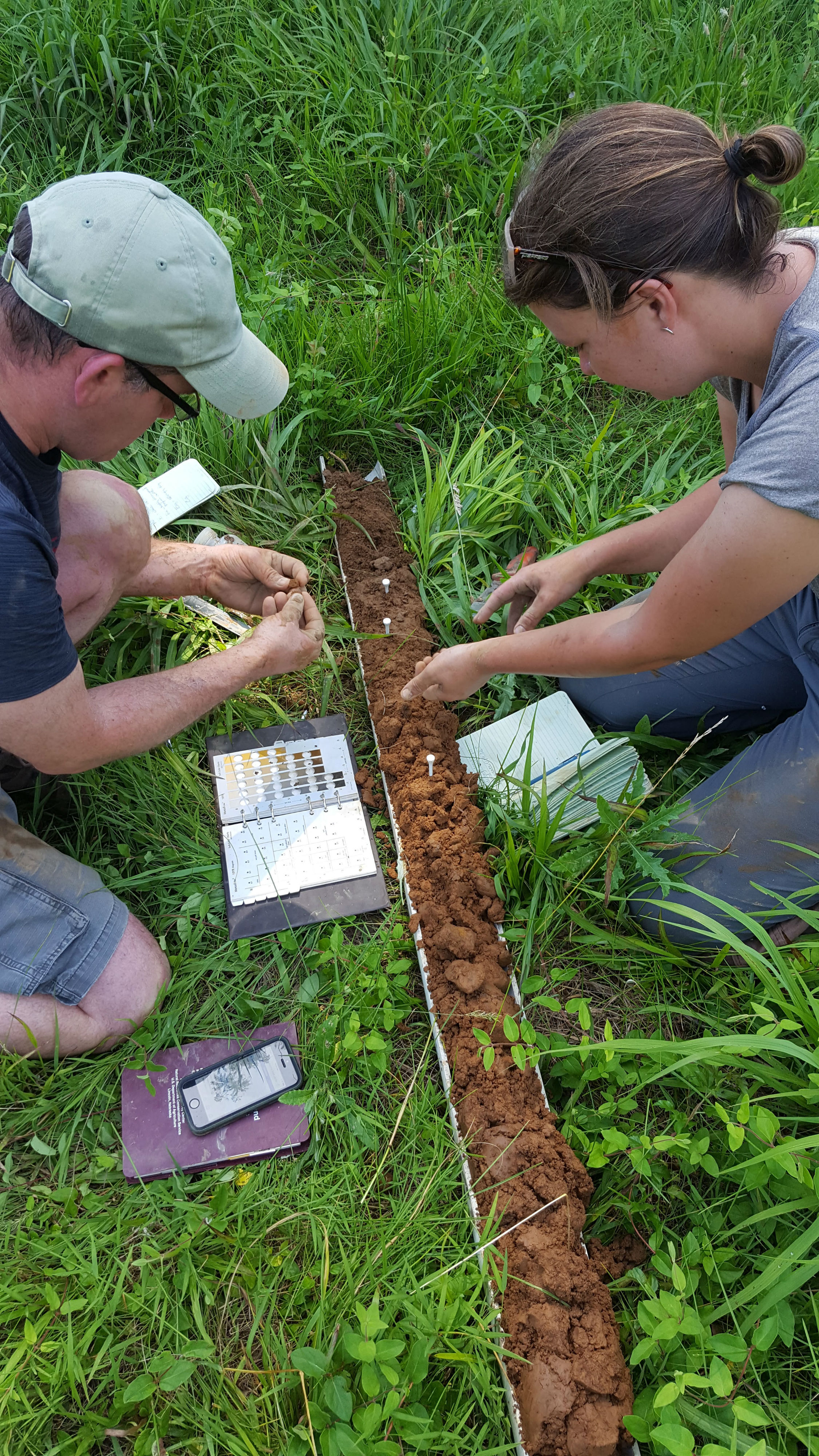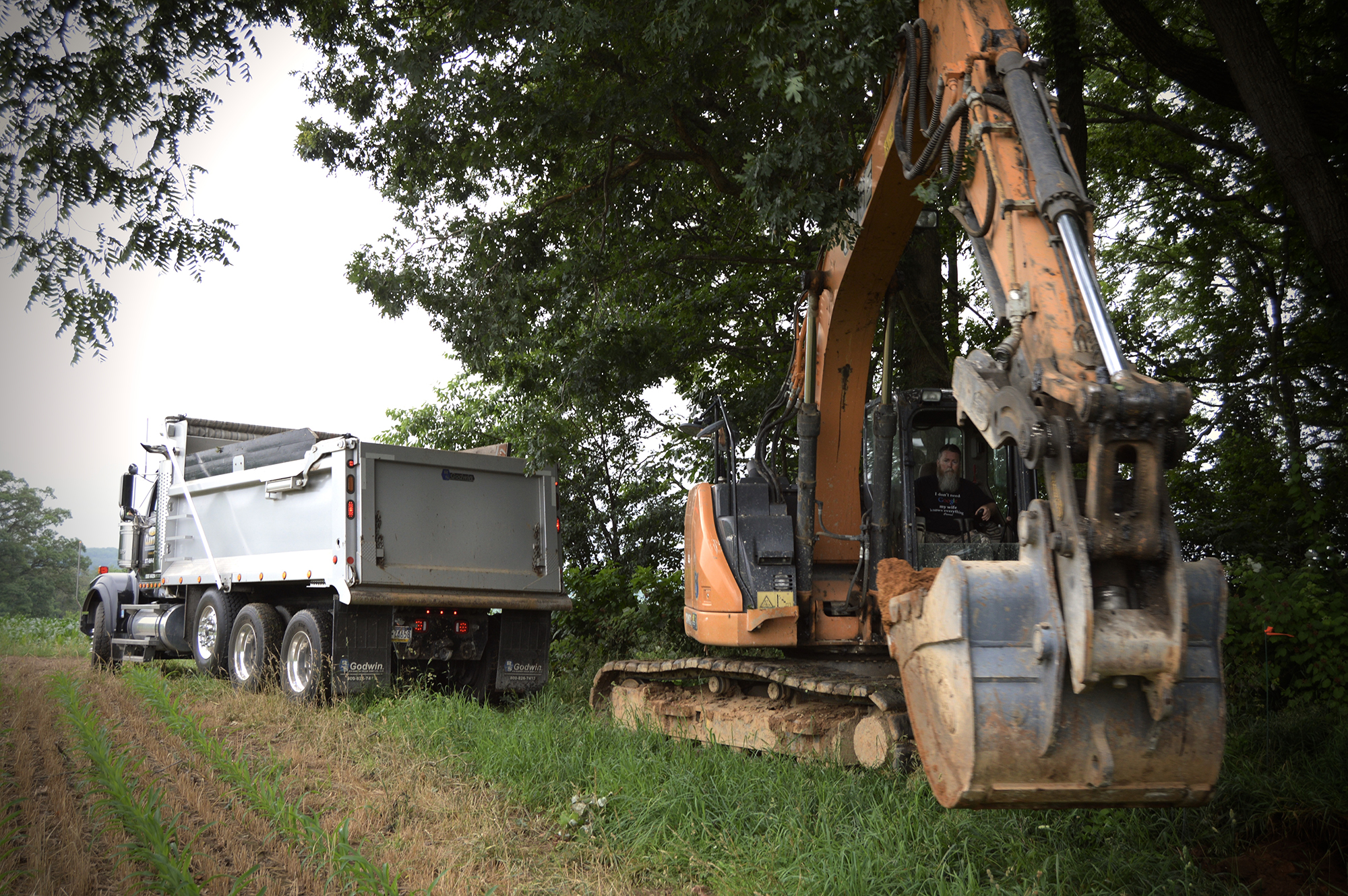Unsurprisingly, Jessica Slade, the horticulturist in charge of managing the natural areas at the Morris Arboretum, is a self-described “plant person.”
“I think about plants all the time,” she says.
But what had not always been front of mind for Slade is one thing that the trees, shrubs, and other plants she cares for could not do without: soil.
That changed this summer, when Slade, a part-time student in Penn’s Master of Environmental Studies (MES) program, took Alain Plante’s Field Study of Soils course.
“It was really interesting to see the connection between the different soil profiles that we observed and the plants that grow above them,” Slade says.
This hands-on appreciation is a primary goal of the course, which Plante, a professor in the School of Arts and Sciences’ Department of Earth and Environmental Science, has taught for several years. Aimed at students in the MES and Master of Science in Applied Geosciences programs, Plante’s course introduces participants to the skills needed to describe and classify soils.
“The analogy would be a course in plant identification rather than a course in plant physiology or botany,” Plante says.
In an intensive five weeks, students learn about the U.S. Soil Taxonomy system from online readings and tools, then join Plante for field trips around the region. In the field, they learn to use the proper language and terms to describe soil color, texture (the proportions of particle sizes in sand, silt, and clay), structure (how those particles are collected together into clods), and other observable features.
In past years Plante has taken students to a variety of locations around the region, but new for this year were two stops on Penn property: the School of Veterinary Medicine's New Bolton Center and the Morris Arboretum.
At New Bolton, Plante worked with a cross-school team to get a soil pit dug. Soil pits—essentially five-foot-deep trenches in the ground—allow students to get close and observe soil profiles and horizons at eye-level. That can be a better teaching tool than using soil augers—a coring technique the class employed at other sites—because pits give a more complete picture of how soil properties change vertically and horizontally.
But getting a big hole dug on a college campus isn’t a simple task.
“The process was highly collaborative,” says Plante. Penn Vet soil scientist John Toth played a key role in getting it done, working with New Bolton Center’s associate dean Corinne Sweeney, representatives from the University’s Environmental Health and Radiation Safety office, and a private excavating company to plot out, approve, and then dig two pits, which were subsequently surrounded with snow fencing for safety.
“Our hope is that the pits can be used repeatedly for future iterations of the course,” Plante says, as well as for other soil classes he offers. “There is no substitute for learning about soils than getting dirty and seeing the soils first-hand. So much learning can happen while standing in a pit that simply cannot be replicated in the classroom.”
For Erin Conley, another member of the class and, like Slade, a horticulturist at the Morris Arboretum and part-time MES student, the field trips and the soil-pit studies in particular were a great introduction to soils of the region. While she had taken courses in soil science during her undergrad years at the University of Wyoming and during a semester abroad in Australia, she had yet to study East Coast soils.
“Field work is generally how I learn best,” Conley says. “It also helped having the course be really concentrated. The lessons you learn the week before are applied in the next field trip.”
As for Slade, she believes her new, deeper understanding of soils will prove useful in both her work restoring habitats at the Arboretum and in her capstone project, which will entail a survey of plants at study sites in northeastern Pennsylvania.
“I think this course has given me a way to understand the landscape with a new perspective that’s very helpful,” she says.










